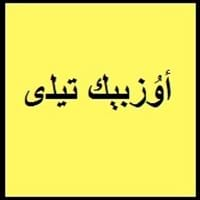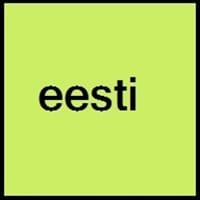Uzbek and Estonian
Countries
Turkey, Uzbekistan
Estonia, European Union
National Language
Afganistan, China, Kazakhstan, Kyrgyzstan, Russia, Tajikistan, Turkmenistan, Uzbekistan
Estonia, Gambia
Second Language
Not spoken in any of the countries
Not spoken in any of the countries
Speaking Continents
Middle East
Europe
Minority Language
Not spoken in any of the countries
Denmark, Russia, Sweden
Regulated By
Not Available
Institute of the Estonian Language
Interesting Facts
- Uzbek is officially written in the Latin script, but many people still use Cyrillic script.
- In Uzbek language, there are many loanwords from Russian, Arabic and Persian.
- Estonian language is considered to be powerful symbol of Estonian identity and culture.
- Estonian language has adopted many words with Finnish language.
Similar To
Kazakh and Uyghur Languages
Finnish
Derived From
Not Available
Not Available
Alphabets in
Uzbek-Alphabets.jpg#200
Estonian-Alphabets.jpg#200
Scripts
Arabic, Cyrillic, Latin
Latin
Writing Direction
Not Available
Left-To-Right, Horizontal
How Are You?
Qalay siz?
kuidas sul läheb
Good Night
Hayirli tun
Head ööd
Good Evening
Hayirli kech
Tere õhtust
Good Afternoon
Hayirli kun
Tere päevast
Good Morning
Hayirli tong
Tere hommikust
Sorry
Kechiring!
Vabandust
I Love You
Sizni sevaman
ma armastan sind
Excuse Me
Iltimos! Menga qarang
Vabandage
Dialect 1
Tashkent
Keskmurre
Where They Speak
Not Available
Gabon, Northeastern coast of Estonia
Where They Speak
Not Available
Georgia, South Estonia
Dialect 3
Ferghana
Idamurre
Where They Speak
Not Available
France, Northwestern shore of Lake Peipsi.
Speaking Population
Not Available
Native Name
أۇزبېك ﺗﻴﻠی o'zbek tili ўзбек тили (o‘zbek tili)
eesti keel
Alternative Names
Annamese, Ching, Gin, Jing, Kinh, Viet
Eesti keel
French Name
ouszbek
estonien
German Name
Usbekisch
Estnisch
Pronunciation
Not Available
Not Available
Ethnicity
Uzbek
Estonians
Origin
9th–12th centuries AD
13th century
Language Family
Turkic Family
Uralic Family
Subgroup
Turkic
Finno-Ugric
Branch
Southestern(Chagatai)
Finnic
Early Forms
Chagatay
No early forms
Standard Forms
Uzbek
Estonian
Language Position
Not Available
Signed Forms
Not Available
Estonian Sign Language
Scope
Macrolanguage
Macrolanguage
ISO 639 6
Not Available
Not Available
Glottocode
uzbe1247
esto1258
Linguasphere
No data available
No data available
Language Type
Living
Living
Language Linguistic Typology
Not Available
Subject-Verb-Object
Language Morphological Typology
Not Available
Agglutinative
All Uzbek and Estonian Dialects
Most languages have dialects where each dialect differ from other dialect with respect to grammar and vocabulary. Here you will get to know all Uzbek and Estonian dialects. Various dialects of Uzbek and Estonian language differ in their pronunciations and words. Dialects of Uzbek are spoken in different Uzbek Speaking Countries whereas Estonian Dialects are spoken in different Estonian speaking countries. Also the number of people speaking Uzbek vs Estonian Dialects varies from few thousands to many millions. Some of the Uzbek dialects include: Tashkent, Afghan. Estonian dialects include: Keskmurre , Tartu. Also learn about dialects in South American Languages and North American Languages.
Uzbek and Estonian Speaking population
Uzbek and Estonian speaking population is one of the factors based on which Uzbek and Estonian languages can be compared. The total count of Uzbek and Estonian Speaking population in percentage is also given. The percentage of people speaking Uzbek language is 0.39 % whereas the percentage of people speaking Estonian language is Not Available. When we compare the speaking population of any two languages we get to know which of two languages is more popular. Find more details about how many people speak Uzbek and Estonian on Uzbek vs Estonian where you will get native speakers, speaking population in percentage and native names.
Uzbek and Estonian Language Codes
Uzbek and Estonian language codes are used in those applications where using language names are tedious. Uzbek and Estonian Language Codes include all the international language codes, glottocodes and linguasphere.





